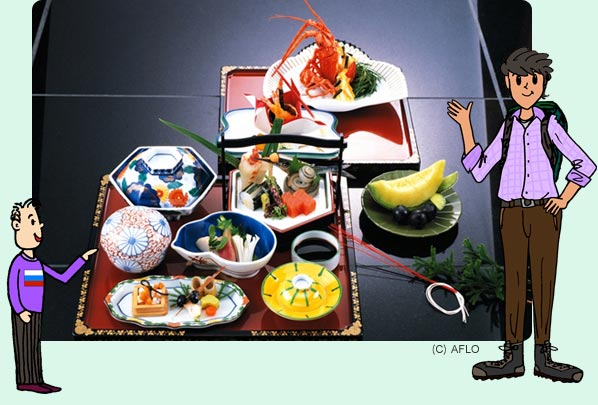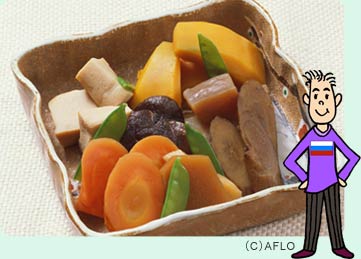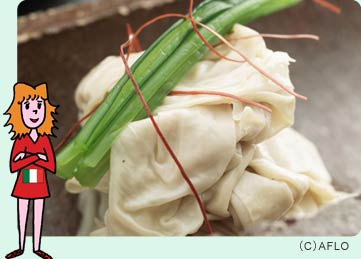
Kyoto, where G8 foreign ministers met on June 26th and 27th, 2008, was the capital of Japan for more than 1,000 years, beginning in 794 until 1869 when the capital was relocated to Tokyo. It is home to the former palace of the emperor, and dishes made for the emperor's court were one of the major influences on Kyoto's food culture. Kyoto cuisine places great importance on the use of seasonal ingredients.

A type of meal called kaiseki is one of the best ways to experience traditional Kyoto food. The basis of kaiseki cuisine is ichiju-sansai ("one soup, three sides"), consisting of a bowl of miso soup (soy bean paste) with three side dishes and a bowl of steamed rice. Different cooking techniques are applied to each of the three side dishes. One of the dishes may feature sashimi (slices of raw fish). Another, called nimono, is made by simmering fish or vegetables in a unique Japanese stock made with dried bonito fish flakes and dried kelp. The third side dish usually consists of fish, such as ayu (sweetfish), that has been salted and grilled. To cleanse the palate after eating these dishes, a plain, lightly salted broth called hashiarai is served. Topping off the meal is a dish called hassun, which contains a mixture of ingredients from the sea and mountains, such as seaweed and yam. Delicately prepared with carefully selected ingredients, all of these dishes are served one at a time in small amounts.

No visitor to Kyoto should go home without sampling dishes made with yuba, which was developed along with shojin-ryori (vegetarian dishes for Buddhist monks). Yuba is made from soybeans that have been stone ground and boiled in a cauldron. The soy milk is then boiled in an open shallow pan, forming a film or skin on the liquid surface. This is yuba, which is collected and dried into yellowish sheets. There are a number of ways to eat yuba, such as wrapping it around vegetables before simmering them or deep frying it to make it crispy. Yuba has become quite popular with Western chefs since it is high in protein and low in fat.
Kyoto cuisine boasts a vast array of distinctive, healthy ingredients. Among these are Kyo-yasai, unique vegetables grown in the Kyoto region. Many of the vegetables have names that incorporate the names of places in Kyoto, such as Kamo-nasu, a plump, round eggplant about 15 cm in diameter that is grown in the Kamo area to the north, and Kujo-negi, a fluffy green onion with a slightly sweet taste that is grown in the Kujo area in the middle of Kyoto, south of Kyoto station. Recently Kyo-yasai have also become popular ingredients at Italian and French restaurants in Kyoto.










